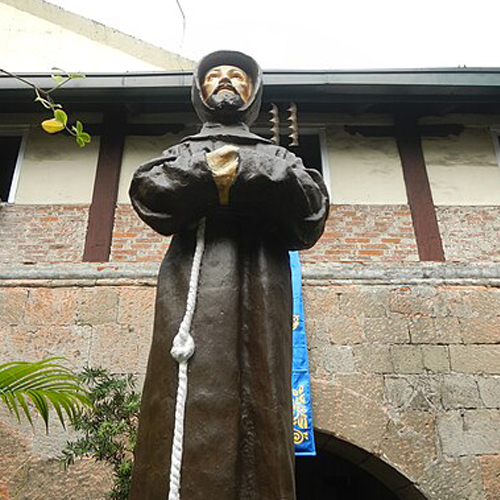
February 6
Saint Pedro Bautista was a Spanish Franciscan who ministered for nine years in the Philippines. Pedro’s talent as a musician led to his first assignment in the Philippines, as a teacher of music and Latin plainchant. Later he was given assignments as a parish priest and as Superior of the Philippine Franciscans. He encouraged the founding of towns. He discovered a hot spring that had medicinal properties and founded a hospital nearby. He also founded one of the few Franciscan institutes for secondary education at the time, a school for girls, in 1591.
Pedro Bautista was sent to Japan on May 30, 1593, to head a group of Franciscan missionaries. He and his Franciscan companions were among the group of twenty-six priests, brothers, and lay Catholics who were martyred at Nagasaki on February 5, 1597. (For more on this event, see “Saint Paul Miki and Companions.”) In the Philippines, a church built by Pedro Bautista out of bamboo and nippa palm as a place of retreat for Franciscan missionaries, called Our Lady of Montecelli, has now become a minor basilica named after him: the Basilica Minore de San Pedro Bautista. The church is in Quezon City, Philippines, and is one of the oldest churches in the country and the oldest in the city, dating from 1590. The original structure was replaced by wood and then by stone. In 2001, it was declared an archdiocesan shrine, and the name was officially changed to Santuario de San Pedro Bautista. It received the title of Minor Basilica on June 13, 2020. A life-size image of San Pedro Bautista was added to the altarpiece during the four hundredth anniversary of the church’s founding, and a statue of Our Lady of Monticelli, the original patron of the church, is enshrined above his image.
(Image © Judgefloro, public domain, via Wikimedia Commons)